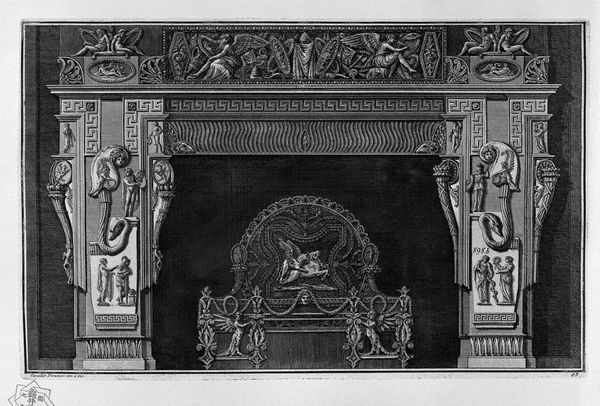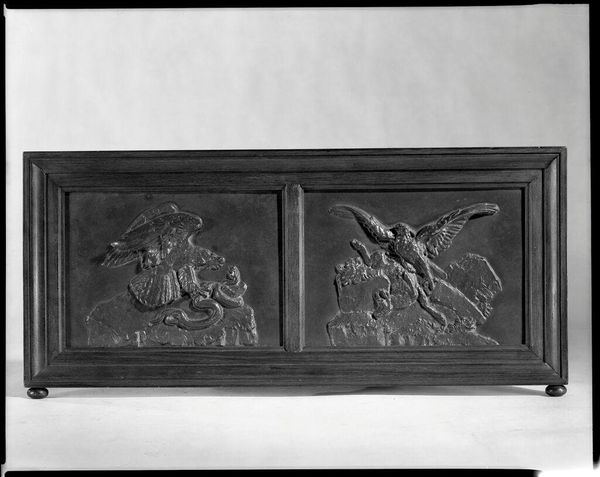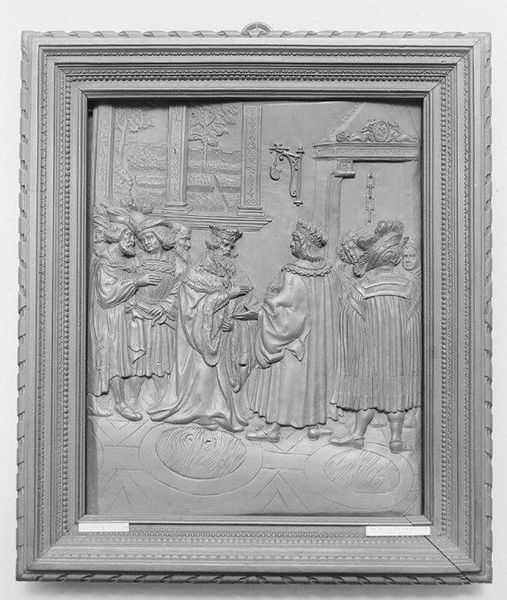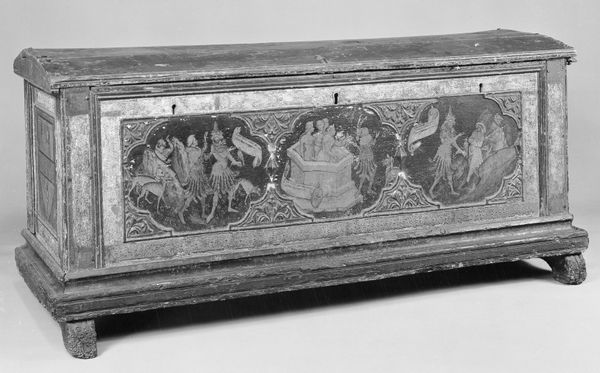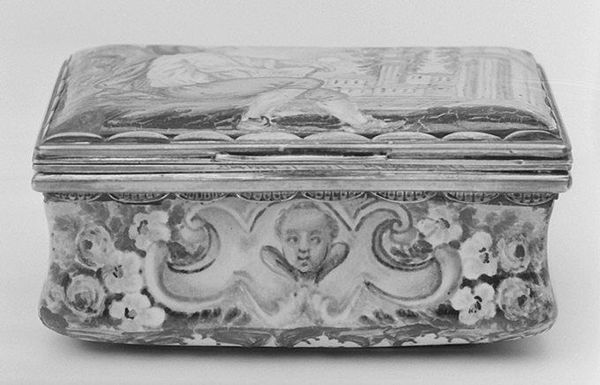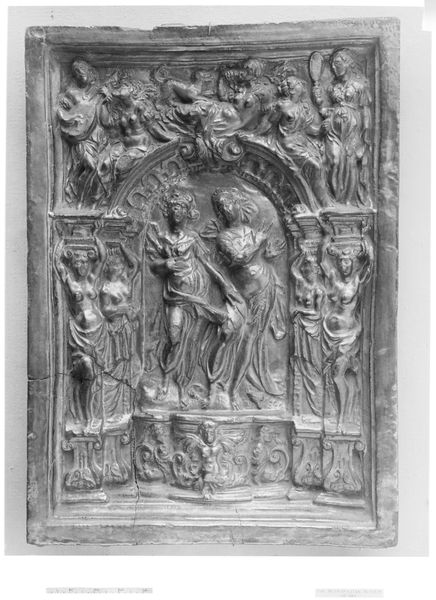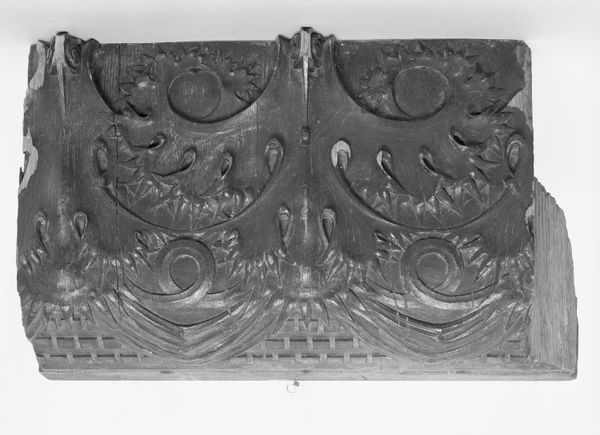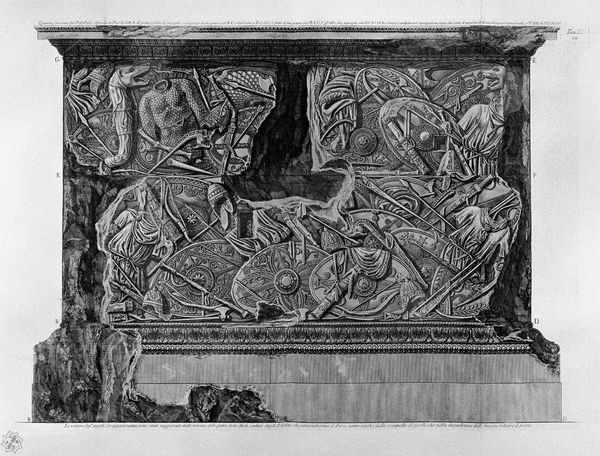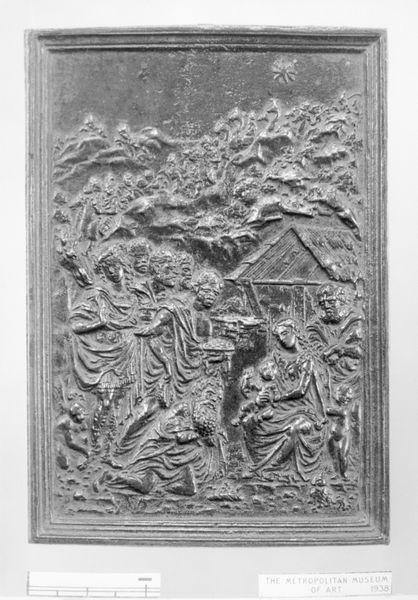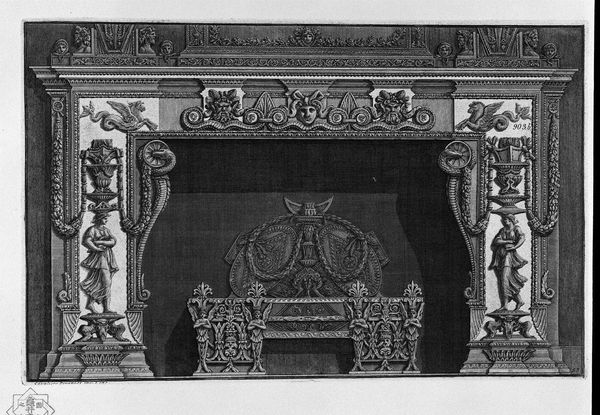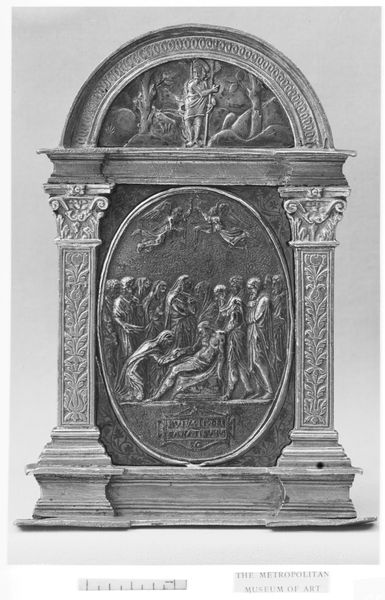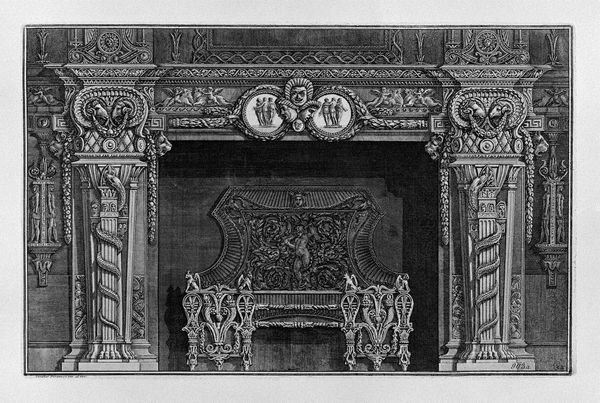
carving, relief, sculpture, wood
#
neoclacissism
#
carving
#
allegory
#
sculpture
#
relief
#
geometric
#
sculpture
#
wood
#
history-painting
#
decorative-art
Dimensions: Overall: 29 1/2 × 65 in. (74.9 × 165.1 cm)
Copyright: Public Domain
Editor: This is Philippe Laurent Roland's "Panel," made between 1771 and 1781. It's a wooden relief, currently housed at the Metropolitan Museum of Art. The symmetry is quite striking, with the central figure framed by those imposing eagles. What compositional elements stand out to you? Curator: The geometric rigor is undeniable. Observe the concentric framing – the central medallion, the rectangular panel itself, the subtle use of symmetry. The orthogonals, defined by the sharp relief and consistent depth of the carving, draw the eye inward, emphasizing the classical figure. The artist’s calculated contrast between the sharp geometric lines of the frame and the organic, flowing forms of the floral garland contribute to an appealing visual tension. What about the materiality interests you? Editor: The monochromatic palette certainly focuses attention on the texture and the details of the carving. Considering the neoclassical style, the wood seems almost... humble, against what I imagine its intended grandeur to be. How might the material contribute to our interpretation? Curator: The choice of wood invites contemplation on texture and line. While marble was conventional for Neoclassical sculpture due to its association with classical antiquity, Roland opted for wood which results in softer tonal graduations. Consider how light plays across the carved surface – does this gentle contrast mitigate the panel's inherent monumentality? Does this material choice subvert the expectations set by the artwork's visual content and style? Editor: It definitely softens the severity I initially perceived. I also see a shift in its presence and appreciate how the lines are softer when compared to traditional relief carvings made with marble. I am thinking of marble statues made during antiquity and how the visual differences result in my ability to read them so differently. Curator: Precisely. By manipulating conventional expectations via strategic choices of material, Roland has managed to forge his own path of semiotic and philosophical relevance. It underscores how materiality can reshape established notions within the artwork’s intended context. Editor: Thanks, this discussion really reshaped how I understood it. Thinking about the wood and textures certainly changed my understanding. Curator: Indeed, every formal choice offers a lens for decoding meaning, thereby underscoring the nuanced dialogue between form and material in Roland's panel.
Comments
No comments
Be the first to comment and join the conversation on the ultimate creative platform.

